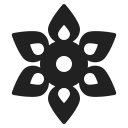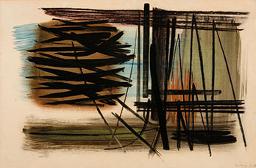Hans Hartung
Hans Hartung was a German artist.
Based on ArtValue.ca records, Hans Hartung's estimated art value is C$60,000 (*)
Hans Hartung's work could be available for sale at public auction with prices in the range of C$1,000 - C$250,000, or even much higher.
ArtValue.ca has 7 auction art sale records for their charcoal drawing results, with prices in the range of C$1,000 to C$250,000.
Hans Hartung was a prime exponent of post-World War II abstract painting in Europe - its refinement as well as its passion. He was a leader of what is most inclusively titled the “Nouvelle école de Paris,” which embraces such directions as art informel, lyrical abstraction and tachisme. This personal, expressive type of painting ran parallel to Abstract Expressionism in the United States. Often considered alongside French artists Jean Fautrier and especially Pierre Soulages (with whom he shared the International Grand Prize for painting at the Venice Biennale in 1960), Hartung was born in Germany. He fled after the negative state reaction to his first solo show in Dresden in 1931. Hartung fought with the French Foreign Legion in Africa and became a French citizen in 1946. T1950-57 sits squarely in the period 1946 to 1954, which is seen as the apex of Hartung’s 60-year career. Like many artists who suffered through World War II and its aftermath, he saw abstraction as a universal visual language more direct than any other. It was in many ways considered therapeutic, redemptive and utopian, a mode in which to express the fullest range of personal emotions and existential hope. The skein of dark, calligraphic lines that we see here can be thought of as Hartung’s “psychograph,” a personal, emotional signature and exploration. T1950-57 is lightened by the use of pastels, with the result that it is less visually fraught than much of his earlier work. Referring in 1946 to his earlier propensities, Hartung wrote, “My drawings were marked by twisted, strange, entangled strokes, resembling desperate scratches […] It was vehement and rebellious painting. Like myself. I felt like I had been cheated. Aside from a few Frenchmen who had enlisted, the other painters had spent the war as refugees elsewhere. They never stopped working, and progressing” (translated from the French). While his characteristic slashing black lines are prominent in the 1950 painting, they no longer dominate the surface. They move in a spacious environment; some are so lightly applied that they meld with the pastel background. Against a softly tinted canvas support, thin and colourful pastel washes have been applied, and they establish the space of the surface. This ultimately regular substrate also maps the plane over which Hartung laid down his characteristically sweeping gestures in black. The contrasts in the image thus produced suggest a dynamic balance between the immediacy of his calligraphic marks and the coloured forms on which they play. His interest in mathematical relationships can be traced in the restraint of this painting. The look and mood of this work is thus airier and more playful than in the past. We thank Mark Cheetham, Professor of Art History at the University of Toronto and author of Abstract Art Against Autonomy: Infection, Resistance, and Cure Since the 60s, for contributing the above essay. This work will be included in the forthcoming Hans Hartung catalogue raisonné being prepared by the Fondation Hartung Bergman, Antibes.

